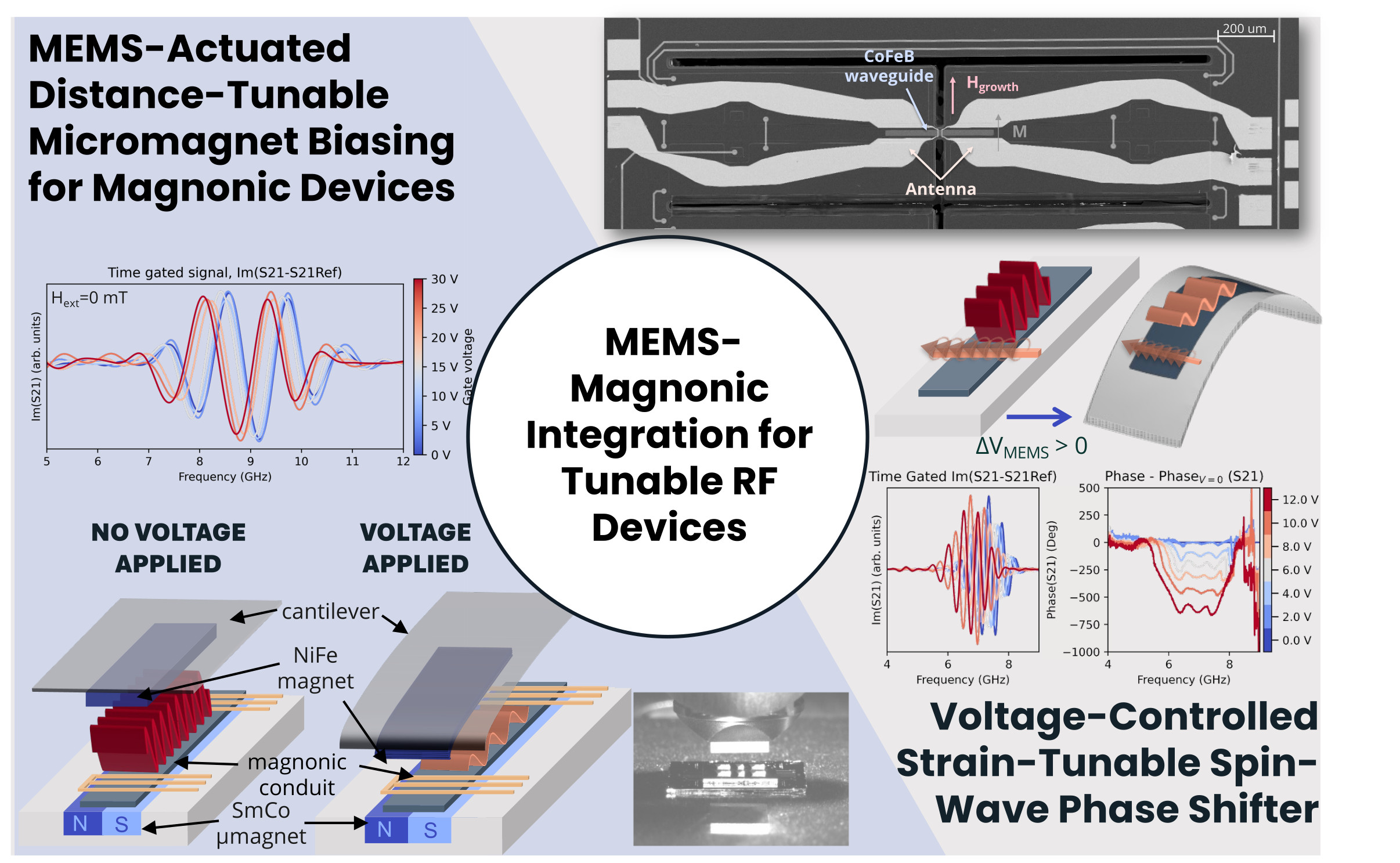MEMS-Magnonic Integration for Tunable RF Devices
Details
| Presenter: | Maria Cocconcelli |
| Title: | MEMS-Magnonic Integration for Tunable RF Devices |
| Affiliation: | Department of Physics, Politecnico di Milano, Milan, Italy |
| Date: | 13.11.2025 |
| Time: | 17:00 h |
| Place: | Building C (ZEVS), third floor, room "Kolloquium" |
Contents of the Talk

Advances in tunable magnonic systems offer exciting opportunities for next-generation radio frequency (RF) signal processing. Spin-wave devices, with wavelengths much shorter than those of electromagnetic waves, enable high energy efficiency and miniaturization [1]. A key challenge, however, lies in eliminating the need for external magnetic bias fields to sustain and modulate spin-wave propagation.
We present two approaches toward realizing fully integrated, self-standing magnonic phase shifters. In the first, a CoFeB waveguide is integrated on a suspended piezoelectric MEMS bridge [2], with RF transducers enabling all-electrical spin-wave excitation and detection [3]. Voltage-controlled mechanical stress in the CoFeB conduit modifies spin-wave propagation through magnetoelastic coupling. Leveraging the intrinsic anisotropy of CoFeB, propagation in the Damon–Eshbach configuration is achieved without an external field. Phase and frequency tunability are demonstrated at zero applied field, yielding phase shifts of up to 720° at 7 GHz with 12 V applied to the MEMS. At higher voltages, spin-wave suppression enables device operation as both a voltage-controlled phase shifter and switch, with reversibility confirmed upon voltage reduction.
In the second approach, we employ a hybrid ensemble of hard and soft magnets to realize an integrated, voltage-tunable device operating around 10 GHz. SmCo permanent micromagnets serve as on-chip field sources, generating bias fields up to 50 mT to sustain spin-wave propagation in a magnonic conduit positioned directly above the micromagnet, enabling operation at frequencies up to 11 GHz.
Tunability is achieved by reconfiguring the local magnetic landscape: a soft magnet, integrated on a piezoelectric MEMS cantilever [2] and flip-chipped onto the magnonic device, dynamically captures and redirects field lines from the SmCo source. Voltage-driven cantilever displacement varies the coupling between hard and soft magnets, thereby adjusting the effective bias field and enabling phase control of spin-wave propagation.
Together, these results demonstrate the feasibility of strain- and field-controlled magnonic devices, establishing a pathway toward compact, tunable RF components such as attenuators and filters enabled by the integration of magnonics and MEMS technology.
References
[1] P. Pirro, V. I. Vasyuchka, A. A. Serga, B. Hillebrands, Nature Reviews Material, 2021, 6, 1114–1135.
[2] A. Ghisi, N. Boni, R. Carminati, S. Mariani, Engineering Proceedings, 2021, 4, 17.
[3] https://mandmems.eu/ (EU Project 101070536 — MandMEMS)
Graphical Abstract





